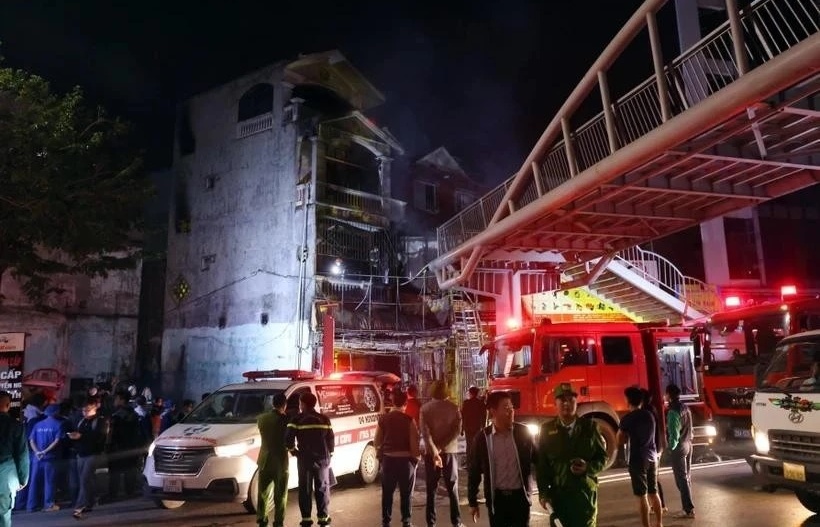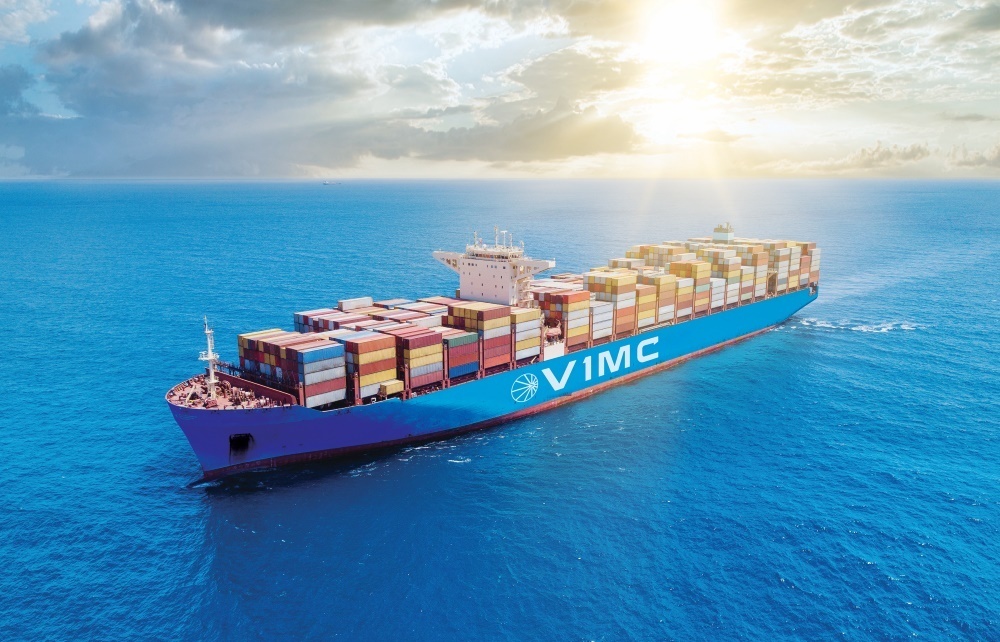Fighting climate change and other water hazards
 |
Because of growing demand for water in Vietnam, the country’s water resources are getting thinner. What factors are challenging water security in the country?
Located in a tropical monsoon region and in the lower reaches of the Red and Mekong rivers, Vietnam receives a lot of rainfall, averaging at about 1,800-2,000 millimetres per year. However, it is distributed unevenly throughout the year.
Vietnam also has more than 3,000 rivers and streams nationwide, including big river systems like the Red, Ma, and Ca rivers in the northern region, many small rivers in the central region, and the Dong Nai and Cuu Long rivers in the southern region.
The country has a total annual water volume of more than 830 billion cubic metres serving over 92 million people. Thus, Vietnam is not a country that suffers from water shortages.
However, over the past years, water security is emerging as a concern as droughts, saline intrusion, and water shortages start to hurt production and livelihoods. This is mainly due to negative impacts from climate change and socio-economic development, especially the development of upstream neighbours that share international rivers with Vietnam.
The country needs solutions to address these difficulties before they get out of hand.
  |
| While Vietnam has a lot of rain and many rivers, water security is a very real issue that needs to be addressed, Photo: Le Toan |
Could you elaborate on the main causes of these challenges?
Despite the great volume of water, only 37 per cent (310 billion cubic metres) comes from within the country, while 63 per cent (520 billion cubic metres) is from international rivers, mainly the Red and Mekong rivers. Thus, Vietnam faces heavy risks from water source instability.
There are two groups of causes to these challenges.
First, there are subjective causes produced by the country’s socio-economic development activities. Over the past 60 years, especially since 1975, about 7,000 assorted reservoirs have been built, with a total capacity of more than 65 billion cubic metres. 85 per cent of these are reservoirs for hydropower plants.
The existing systems of irrigation are now providing water for 7.75 million hectares of rice fields and 1.65 million hectares of other types of agricultural fields. The systems also help drain off water from more than 1.72 million hectares of agricultural land and supply about six billion cubic metres to people’s livelihoods and industry, as well as provide water for more than 700,000 hectares of aquaculture.
Vietnam’s hydropower plants currently account for about 30 per cent of the country’s total power capacity, with 40 plants having a capacity of over 100 megawatts (MW) each.
So the total water volume needed for irrigation, water supply, and power generation is enormous, heavily impacting national water security.
Vietnam is rich in forests. Thanks to efforts in afforestation, Vietnam had a total forested area of 13.5 million hectares late last year. However, hundreds of thousands of hectares of forests, including primeval forests in the upper reaches of rivers, have been felled to make room for infrastructure works. Additionally, illegal forest exploitation is still a concern in many areas.
Thus, the quality and distribution of forests has been badly affected, causing difficulties in water source regulation and leading to greater disparities between flooding and dry conditions. This has hurt the efficiency in operating reservoirs and caused difficulties in ensuring water access in the lower reaches.
We have also turned many inundated areas, ponds, and lakes, as well as agricultural land into urban areas, industrial parks, and infrastructure systems. In addition to wastewater discharge and inefficient water usage, the risks to the country’s water resources have been increasing.
Water quality and pollution are considered important factors to water exploitation and usage. While the total water volume remains largely stable, the reduction in water quality due to pollution has become the biggest threat to water security.
The second group are objective causes. This group covers two main causes, including the development of upstream areas by international rivers, and climate change and rising sea levels.
The rapid development of upstream nations sharing the two international rivers – the Red and Mekong rivers – over the past 20 years have badly impacted Vietnam’s water inflows.
In the upper reaches of the Red River, dozens of reservoirs have been built, controlling about 49 per cent of the total water volume of the river basin. In the upstream area of the Lo and Gam rivers, there are eight more reservoirs, three of them of a major size.
As of late 2016, six hydropower plants have been built in the main course of the Red river, with a total capacity of 14,850MW. In the river’s branches, there are 35 hydropower plants with a total capacity of 4,950MW. The water-storage capacity of the hydropower system in the Mekong River basin is 31 billion cubic metres, which is expected to continue increasing in the future. The water outflow from the Mekong River basin will have great impacts on the regulation of water during the dry season in the Mekong Delta region.
In addition, climate change has also had a significant impact on Vietnam’s water resources. Climate change has caused abnormal climate conditions, with growing frequency of droughts, rains, storms, saline intrusion, and flood tides. This has caused huge damages and losses in human lives, assets, infrastructure, culture, society, and water security as well.
What steps will the government take to promote the efficient usage of water among people and enterprises? Also, what solutions will the government apply to save and protect water resources?
For each geographical area, we will have different solutions based on the area’s water resources and their conditions. However, there must be two groups of solutions, namely regulatory and societal solutions and construction solutions.
In the group of non-construction solutions, we must take several measures.
First, it is necessary to retain ecosystems that function as protectors and regulators of water resources. Special importance must be attached to protecting and developing forests, particularly protective forests in the upstream areas of river basins.
Second, awareness about using water efficiently, applying water-saving technologies, and planting trees using less water must be raised. Currently, the agricultural sector is using 70-75 per cent of Vietnam’s total water output. Also, we must manage systems of providing livelihood-oriented water, in a bid to reduce the rate of wasted water from the current average of 25-30 per cent to below 20 per cent over the next 10-15 years.
Third, it is necessary to reduce wastewater pollution in urban areas and industrial parks as it negatively impacts water quality. These solutions should include gradually improving the quality of wastewater treatment facilities and encouraging enterprises to use efficient technology and apply clean production chains in order to ensure that all wastewater meets technical and environmental standards before being discharged.
Fourth, our capacity in meteorological and hydrological forecasts and natural calamity warning and prevention must be strengthened, so as to minimise losses. Reservoirs’ efficiency must be ensured.
Fifth, people must be encouraged to partake in, protect, exploit, and use water resources and irrigation works efficiently. Public-private partnerships must be strengthened with a view to encouraging private firms to invest in constructing water-related projects.
Sixth, there must be “demand-management” measures, limiting the plantation of trees with high water consumption in dry areas and encouraging the cultivation of trees that are able to grow in severe climatic conditions.
And finally, there must be further international co-operation on the exploitation of cross-border rivers in order to ensure efficiency. Additionally, this co-operation would prove invaluable in taking the initiative to map out solutions and plans to cope with negative impacts caused by upstream development.
We will also have to think about solutions in construction and maintenance.
Overall, it is necessary to perfect existing works and construct new ones under proper planning, in order to raise the efficiency of the exploitation and usage of water in the service of socio-economic development and to ensure water security.
In areas frequently hit by droughts, there must be reservoirs and works that are used for distributing and storing water. In the Mekong Delta, which is often challenged by droughts, water shortages, and saline intrusion, it is necessary to further assess the impacts of climate change and rising sea levels.
With all these solutions, we expect that sufficient water can be ensured for the production and livelihood of people and enterprises, and that losses caused by natural calamities can be reduced over the next several decades.
What the stars mean:
★ Poor ★ ★ Promising ★★★ Good ★★★★ Very good ★★★★★ Exceptional
Latest News
More News
- Requirements for foreign drivers, vehicles operating in Vietnam (December 13, 2024 | 11:03)
- Hanoi pushes To Lich river cleanup and urban wastewater overhaul (December 10, 2024 | 14:55)
- Green and smart transition to address urban challenges (December 10, 2024 | 11:47)
- Hanoi boosts night offerings but still trails rivals (December 10, 2024 | 11:33)
- Hanoi to promote 16 medicinal plant varieties for cultivation (December 06, 2024 | 19:11)
- Hanoi to enact economic-technical norms for training in 37 occupations (December 06, 2024 | 14:08)
- Hanoi creates 213,200 jobs, exceeding annual target by 29.1 per cent (December 06, 2024 | 14:04)
- Vehicle registration time cut to a few minutes in Hanoi (December 06, 2024 | 09:36)
- 14 Vinschool students top global rankings in Cambridge exams (December 05, 2024 | 18:27)
- Thousands flock to Hanoi for craft festival (December 05, 2024 | 18:25)



















 Mobile Version
Mobile Version